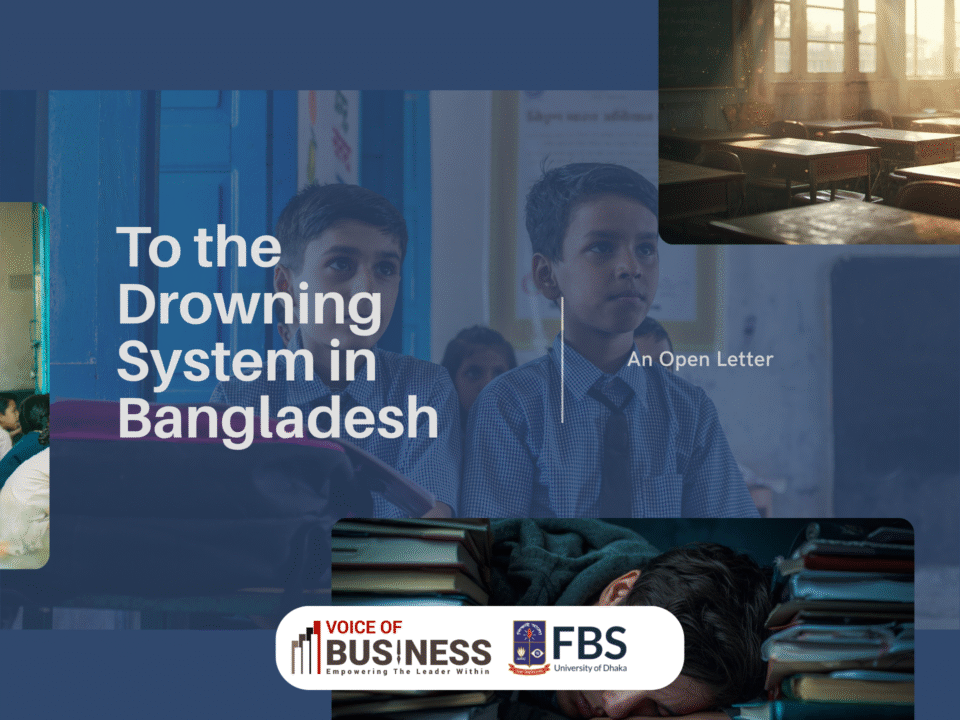From Stage to Street: Artistic Movements in Bangladeshi Social Commentary

“All art is quite useless,” wrote Oscar Wilde in his novel, “The Picture of Dorian Gray.”
June 2, 2025
Chika Mara (Graffiti)
June 2, 2025Does the suffering we witness in the world always require the issuance of a writ to come to an end? Think about the young girl taking care of her in-laws at the age of 12 as she was forced into an early marriage. Her story might not make headlines, but it comes to life through a heart-rending play that reaches out to everyone passing by, urging them to feel her loss and question why such practices still exist. Or, think of a quiet night when a woman’s cries shatter the silence as her husband keeps beating her. Her screams are heart-wrenching, yet the law alone can’t heal her wounds. But then, you see a mural on a nearby wall—powerful enough to inspire the entire community to raise their voice for the victims of domestic violence.
Let us recall the Shahbagh Movement, where the streets transformed into a living gallery of graffiti and murals. These artistic expressions were not mere decorations but battle cries, mobilizing the nation to demand justice. Recall the aftermath of the tragic Rana Plaza collapse, when artists used street memorials to honour the lives lost and call for improved working conditions.
Art in Bangladesh isn’t just about creating something beautiful—it’s about illuminating issues often left in the shadows. It might be a song that brings tears to your eyes, a play that makes you yearn for a better world or a photograph that captures an overlooked reality. Through the lens of an artist, we see the world not just as it is but as it could be—a more just and equitable place for all, filled with hope and optimism.
Voices on the Walls
The graffiti by HOBEKI featuring Shubodh represents Bangladesh’s unemployed and marginalized people. Despite living in constant fear of the future, they continue to strive, their spirit unbroken. Being born in this land alone doesn’t guarantee their fundamental rights and needs. The artist’s cryptic words: “Subodh tui paliyey ja, ekhon somoy pokkhey na, tor bhaggey kichhu nei,” might even be a call to the minority community of Bangladesh, urging them to leave this land while there is still time. Some graffiti artwork on the pillars of the Moghbazar flyover showcases the consequences of environmental degradation, such as deforestation and pollution.
Theatre for Change
‘Agunjatra’ by Prachyanat is a groundbreaking play that goes deep into the lives and struggles of the hijra (transgender) community in Bangladesh. Through its compelling narrative and striking performances, the play tackles identity crisis, discrimination, and the quest for acceptance and dignity, shedding light on a marginalized group. Dhaka Theatre’s 26th production, “Bonopangshul”, brings to life the experiences of the oppressed tribe, who have endured years of subjugation by the dominant Bangalee community. This play illuminates the forgotten corners of society, using art to raise awareness and empathy and, ultimately, foster social change, leaving the audience enlightened and informed.
Stitching Struggles
Bangladesh’s traditional embroidered quilt, Nakshi Kantha, is a vibrant canvas on which artisans, especially women, express their experiences and address pressing social issues. Artisans like Surayia Rahman depict women’s struggles, such as poverty, domestic abuse, and gender inequality, through intricate patterns and motifs. Each quilt is a story of resilience, a portrayal of the rich cultural heritage and the inner voice of the people, whom we tend to forget.
Lyrics of Impact
Music has always been a unifying force in Bangladesh, especially in times of social turmoil. The songs of Kazi Nazrul Islam, known as Nazrul Geeti, stand out for giving voice to the voiceless. Songs like “Bidrohi” inspire movements against oppression, urging listeners to stand up for their rights. Similarly, Shahnaz Rahmatullah’s “Jibon Dhara” addresses marginalized communities’ struggles and advocates for social justice and equality. Through his heartfelt lyrics in “Bidhata,” James poignantly touches on themes of poverty, injustice, and the collective aspirations for a better future for all Bangladeshi. “Shonkho Bajiye Roilo” by Arnob is a song that addresses societal apathy towards poverty and homelessness, urging listeners to take action and create positive change. These songs, spanning different genres and generations, reflect the enduring power of music in raising awareness and catalysing social change in Bangladesh.
Lens on Society
Imagine diving into the depths of Bangladeshi cinema, where each frame acts as a mirror reflecting the pulsating heart of society. Within this cinematic landscape, documentaries emerge as crystal-clear lenses that capture raw narratives of our society. For instance, Amitabh Reza Chowdhury’s “Ainabaji” addresses the issues of gender violence and societal pressures women face in Bangladesh. Meanwhile, Sharbari Ahmed’s documentary “Daughters of the Red Light” provides a glimpse into the lives of young girls and women who are victims of child marriage and sex work in Bangladesh. “Made in Bangladesh”, a film directed by Rubaiyat Hossain, follows the story of a young female garment worker who becomes a labour leader fighting for better working conditions and gender equality in the garment industry, inspiring viewers with her courage and determination. These films not only captivate audiences but also reflect urgent social issues that influence the essence of Bangladeshi society, leaving viewers enlightened and aware.
In a world where suffering persists, and challenges endure, art in Bangladesh manifests hope. Bangladeshi find their voice through artistic expression and let the world hear it. It bridges divides, unites communities, and calls us all to envision a future where justice, equality, and dignity prevail. From the compelling narratives woven into Nakshi Kantha quilts to the resounding echoes of Kazi Nazrul Islam’s songs, from the defiant strokes of street art to the evocative narratives of cinema and theatre, every artistic medium carries a message. As we embrace the transformative power of creative expression, let us heed its call to listen, act, and strive for a society where every voice is heard, and every life is valued.
Author: Shreya Halder



